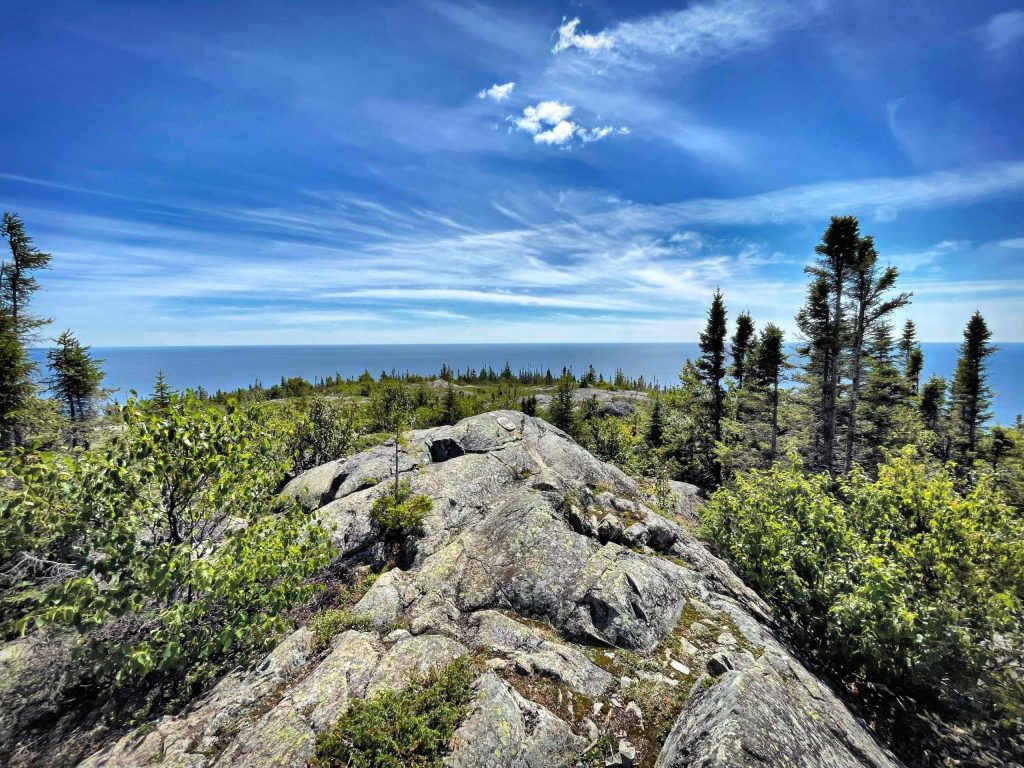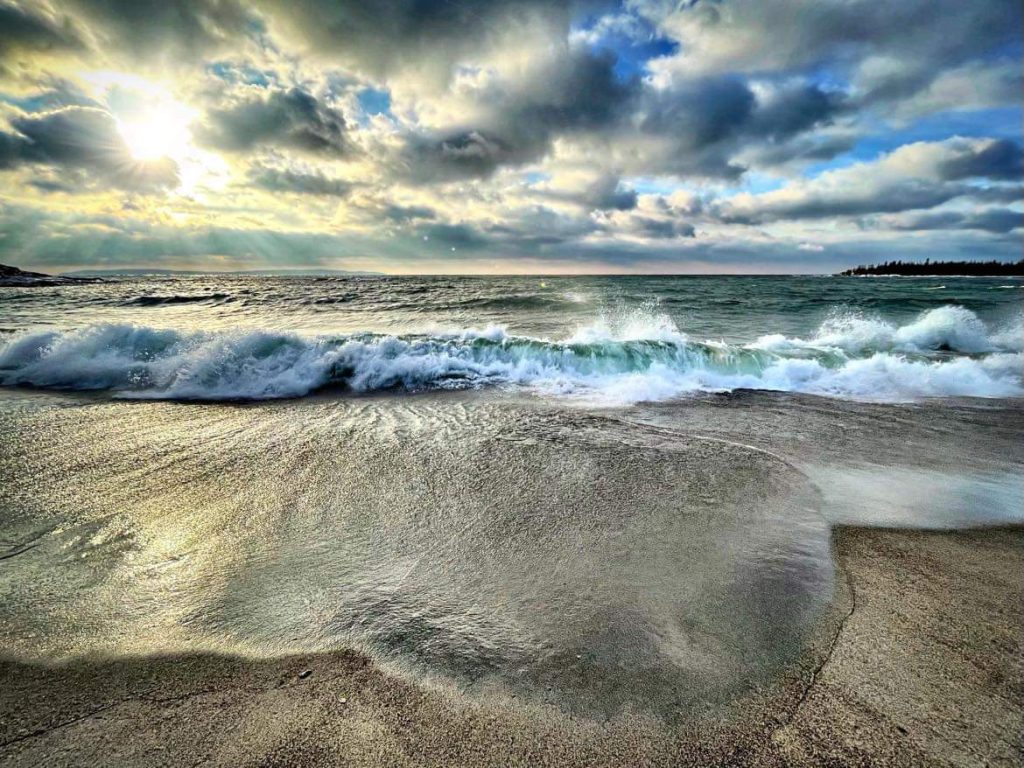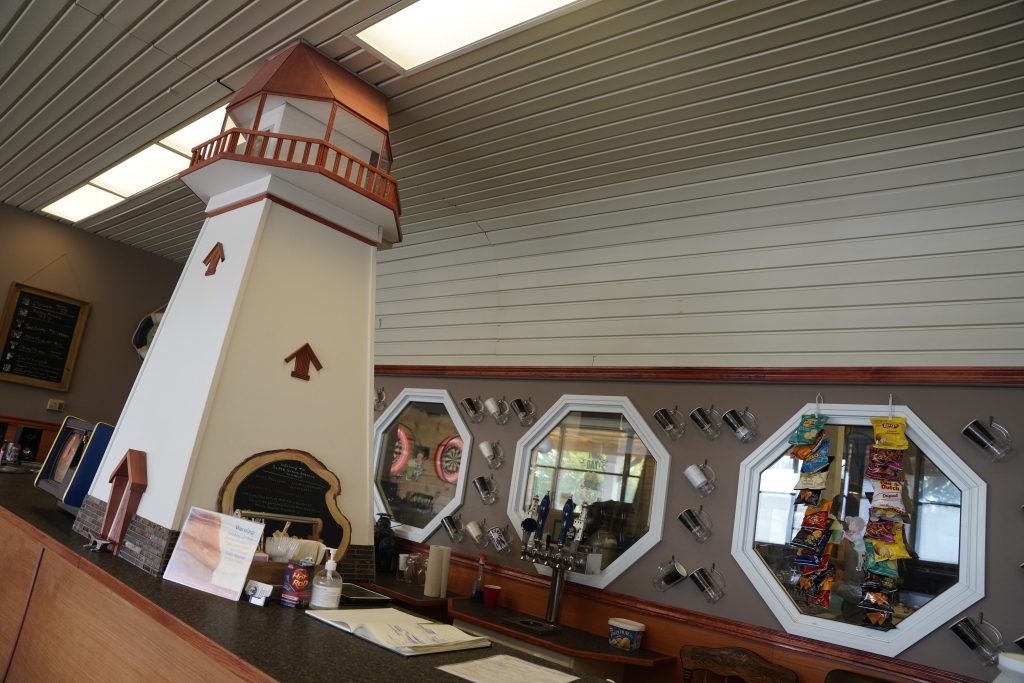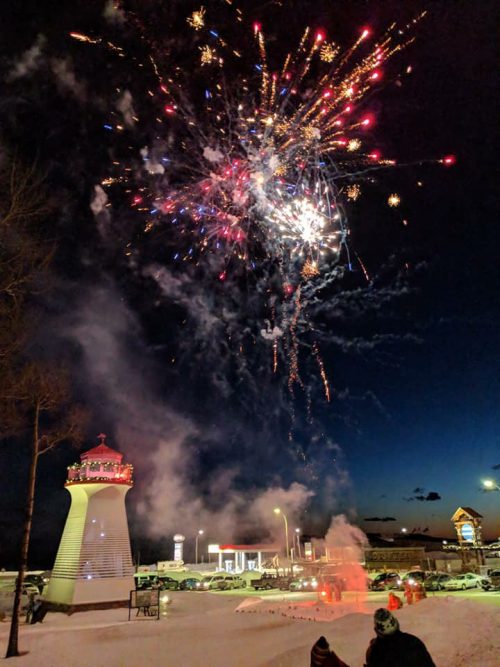The rugged Northern Ontario forest is the reason for the existence of Terrace Bay, named after the terraces left behind when glaciers receded about 20,000 years ago. This is a history of Terrace Bay.
Terrace Bay began its life as an undeveloped area catering to the needs of the forestry industry. The decision to develop the town was made in the early 1940’s by the Longlac Pulp and Paper Company which changed its name to Kimberly Clark Pulp and Paper Company in 1958.
Related Article: A History of Aguasabon Falls and Gorge

By the end of 1948, Terrace Bay consisted of about 230 houses serviced with sewer, water and electricity but surrounded only by bush. The roads were rough, and the highway was still not completed through the town. The residents had to travel for medical attention, to attend church, to pick up and send mail and do their banking.
Despite these hardships, the newly arrived workers and their families must have been pinching themselves to make sure they weren’t dreaming when they found themselves in such stunningly scenic surroundings. Built attractions such as the community’s iconic lighthouse, its golf course, hiking trails and beach development were years away in the future but, in the meantime, they could feast their eyes on spectacular Lake Superior views, the majestic Aquasabon Falls and Gorge and the beauty of the forest and cliffs around them.

In 1951, the Lakeview subdivision was started, with sewer, water and electrical services provided for over 100 houses. Other additions to the community were two new churches, a 22-bed hospital, post office, bank, liquor store, theatre, clothing store and railway station. Construction of the Memorial Recreation Centre was completed in July 1953 with the building consisting of an arena, curling club, restaurant, bowling alley, library, offices, meeting rooms and public washrooms.
In 1955, the Aquasabon Golf Club was built, adding to the list of amenities that both locals and visitors could enjoy.

The town’s mill has had a checkered history, having gone through cycles of shutting down, changing ownership, then shutting down again. In 1972, the Kimberly Clark Pulp and Paper Company Ltd. and Kimberly Clark of Canada Ltd. amalgamated. From 1972 to 1977 the population of Terrace Bay increased from 1,755 to 2,299, directly attributed to Kimberly Clark’s expansion program. At that time, the mill was the lifeblood of the region.

Around the same time, a group of young locals set out to build the Casque Isles Trail, a recreational nature trail that this group of volunteers cut through thick boreal forests, weaving 53 k along the North Shore of Lake Superior. Eventually deemed to be one of the top ten hiking trails in Ontario by Explore Magazine, Casque Isles was a key step in establishing the community and the region as a Mecca for outdoor enthusiasts and it is still meticulously maintained by dedicated volunteers.

In 2005 Kimberly-Clark sold the mill to Neenah Paper Inc, who then sold the mill to Buchanan Forestry Products in 2006. It was shut down in 2009 when it ran into financial hard times but after a reorganization, it reopened in October 2010 amidst strong pulp markets. Soon after, though, the mill ran into financial trouble again and had to declare bankruptcy and look for a buyer. In July 2012, the Aditya Birla Group agreed to purchase the mill.

This latest period of uncertainty spurred the town’s leaders to look for ways of diversifying the economy, and not surprisingly, they saw the natural beauty of the region as the foundation for moving forward. The municipality carried out a plan for growth in 2010/2011 including a downtown revitalization initiative, a cultural centre project, and a rebranding of the township based on Lake Superior and the Terrace Bay Lighthouse attraction that had just been built in 2011.

Terrace Bay’s status as a tourism destination got another boost on September 1, 2015, when the federal government announced the establishment of the Lake Superior National Marine Conservation Area. The largest freshwater marine protected area in the world, it extends across the top of Lake Superior from Thunder Bay to just east of Terrace Bay, and south to the Canada-United States border.

The township was quick to act on this significant development. The Township of Terrace Bay Waterfront Masterplan was commissioned in 2016 and completed in 2017, signaling the beginning of a major waterfront enhancement project that would complement the town’s beautiful sandy beach and would see over $3 million invested. Features of the Terrace Bay waterfront include a pavilion with a Parks Canada store and visitor centre, a 300-metre illuminated boardwalk, kayak and canoe launches and Parks Canada red chairs.

Also fairly new in town is the Slate Islands Brewing Company. When the local post office vacated a 5,000 square foot office space, Brian Doig imagined a small craft brewery taking over the location. His dream is now a reality. Next door to the brewery is the Lighthouse Gallery, a contemporary venue for local artisans to showcase and sell their arts and crafts.

Terrace Bay really knows how to celebrate. Beginning in February with the winter carnival, Terrace Bay Winterfest, the fun continues in the summer with Canada Day celebrations, the Terrace Bay Beach Festival, the Terrace Bay Lighthouse Festival and Dragfest, the immensely popular automobile drag race held at the Terrace Bay Airport and celebrating its 25th Anniversary in August, 2024. Dragfest attracts some 5,000 spectators over the three days of the event. In September, as the leaves are starting to turn, the township comes together at the Terrace Bay Simcoe Plaza to celebrate the region’s creativity with the Fall Street Market featuring unique vendors, community groups, artists, and artisans from across the region.

Uncertainty about the mill’s future still lingers with operations having been put on hold in early 2024 but Terrace has forged ahead, establishing itself as a place for outdoor adventures, arts and culture, special events and Northern hospitality. With the groundbreaking ceremony recently held for the Lake Superior National Marine Conservation Area Visitor Experience Centre in nearby Nipigon, and the visiting of cruise ships, it will be exciting to see what the future holds for Terrace Bay and the Superior Country Region.
